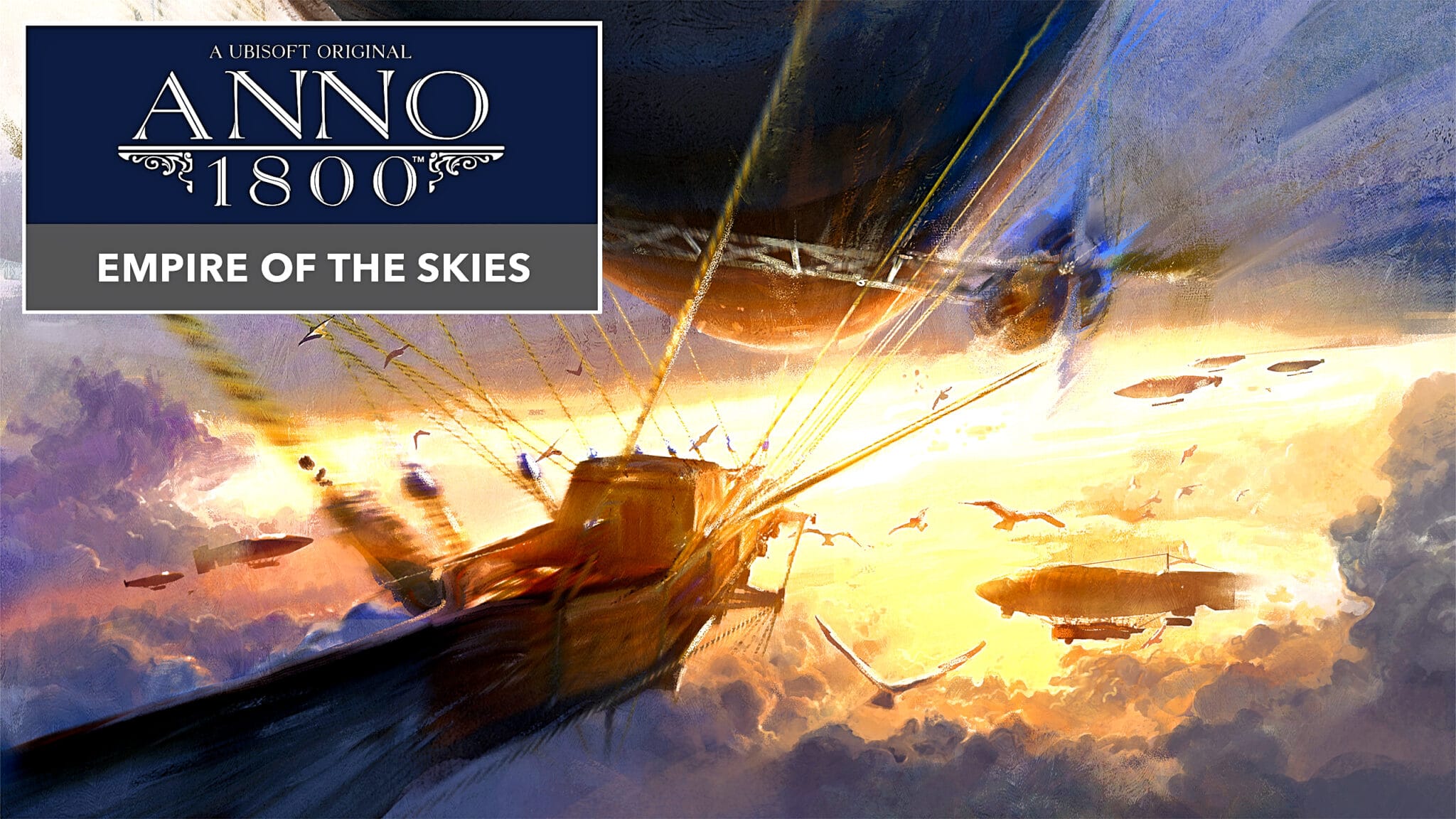The second DLC of Season Pass 4 brings new airships, a postal system and finally commuter traffic in the New World: Who is it worth it for?
The New World so before Season 4: “Menno! Over there they”re getting gnarly skyscrapers and hordes of tourists, and we”re once again looking down the barrel!”
The New World with the DLC Realm of the Skies: “No way! First the haciendas, and now the airships! Who”s going to build all that?”
We are! Because as soon as we start up the eleventh expansion of Anno 1800, we are once again thrown into a pleasant flow – and in no time at all we have tens of hours more on the clock. However, Empire of the Skies is not the right thing for every Anno fan. Why and for whom the add-on is suitable, we explain to you in the test.
Table of Contents
What”s inside Reich der Lüfte?
The DLC Empire of the Skies introduces more airships (after the expansion The Passage), which, among other things, transport letters between the islands and regions. The New World in particular benefits from the modular airports, more on that in a moment.
The Airships
You can build eight different types of airships, from the cheap, very fast Harpy with only one cargo slot to the sluggish Zephyr, which offers eight slots. Some types are also available as military variants for the new air battles (see below). Compared to the ships, however, we find the planes too good: While we had to make a real effort to build the “Great Eastern” with its eight cargo slots, we build the Zephyr airship with the same cargo capacity on the side, so to speak.
You can build the airship hangar monument in four stages, after which you can assemble eight different types of airship here. Among other things, you will need aluminium parts and helium (alternatively gas from the DLC The Passage).
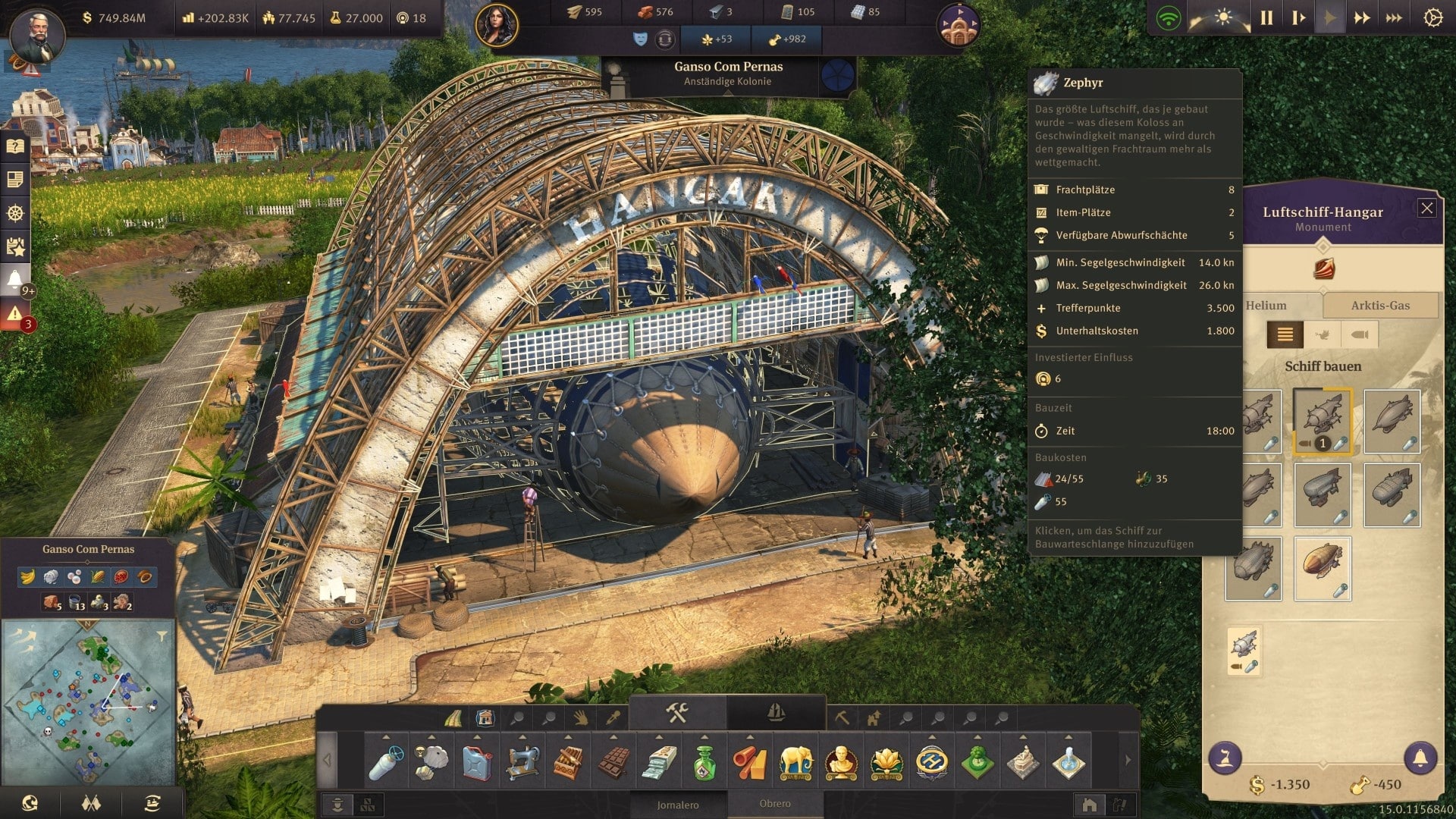
New Resources
After the resource marathon of the last DLCs, Empire of the Skies is almost modest. You need aluminium as a building material for the airports, hangars, post offices and mailboxes, and helium for the zeppelins. The aluminium parts are formed in smelters from coal and the new mineral bauxite.
Bauxite is only available in the New World and is mined in mines. Helium is also only extracted in the New World, but you have to supply the drilling rig with clay and lubricants (lubricants are extracted from saltpetre and fish oil in an oil press). If you have the Arctic DLC The Passage, you can use Arctic gas instead of helium to build an airship, which is even faster;
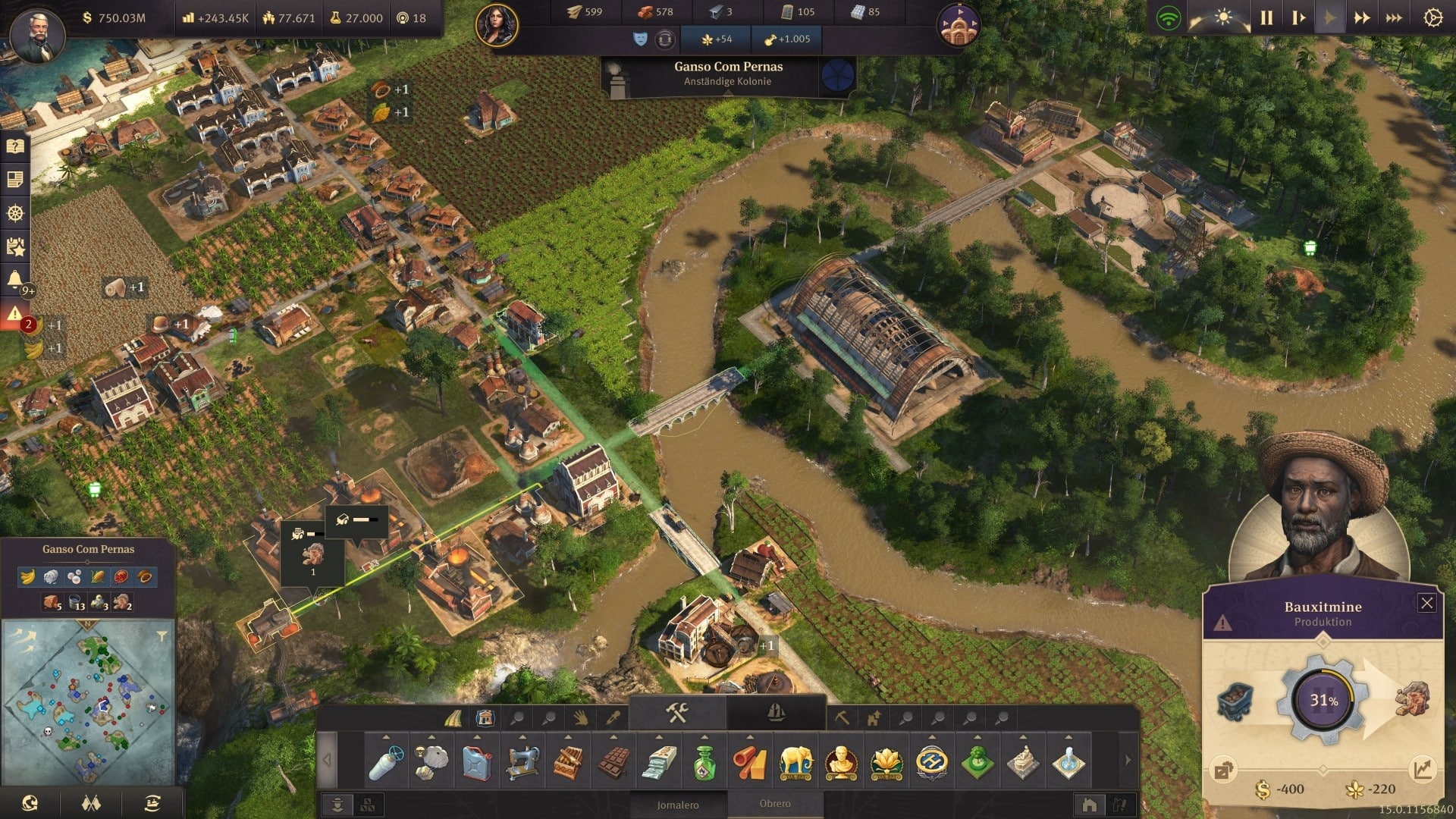
Drop goods
Your airships don”t just ferry goods between the continents in the classic way, but can also drop five different objects. In a special factory you can produce bombs (against harbour facilities and ships), sea mines, leaflets (lower satisfaction and productivity, provoke uprisings), aid packages (the positive counterpart to the leaflets) or fire water containers against fire. You pack the desired objects into the slots and drop them over the target area – either all on one target or spread out in a line.
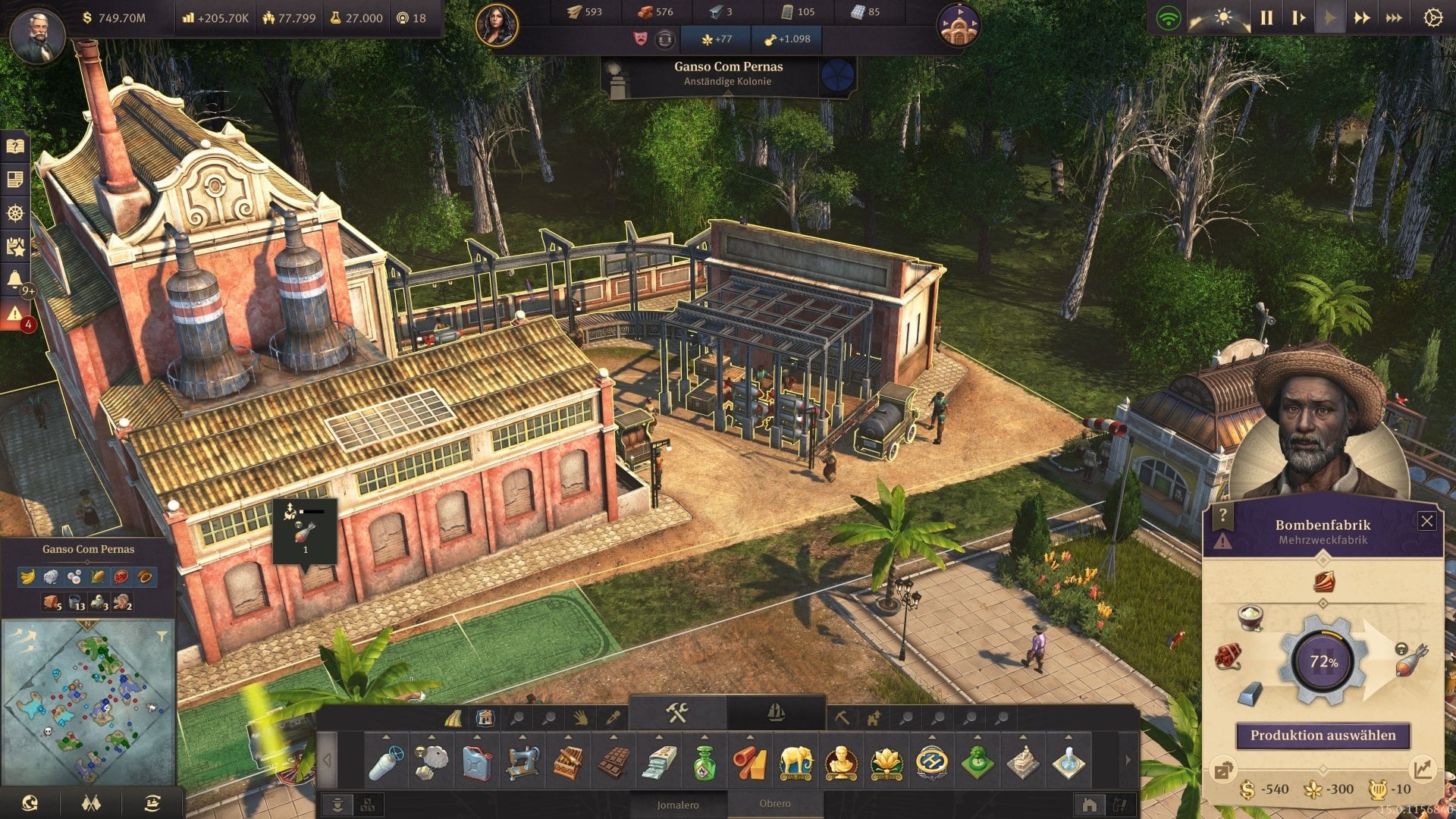
Air combat
Zeppelins with guns can attack other airships but cannot shoot at ground targets. For ground-to-air defence, you build flak monitor ships and stationary flak positions on the coasts. Our impression of the air combat system, however, is ambivalent.
It does look impressive when a huge Zephyr airship drops its bombs. But in our test game after the DLC launch, the AI players immediately built a hangar and lots of stationary flak, but not a single Zeppelin. Even the ever-well armed Malching didn”t.
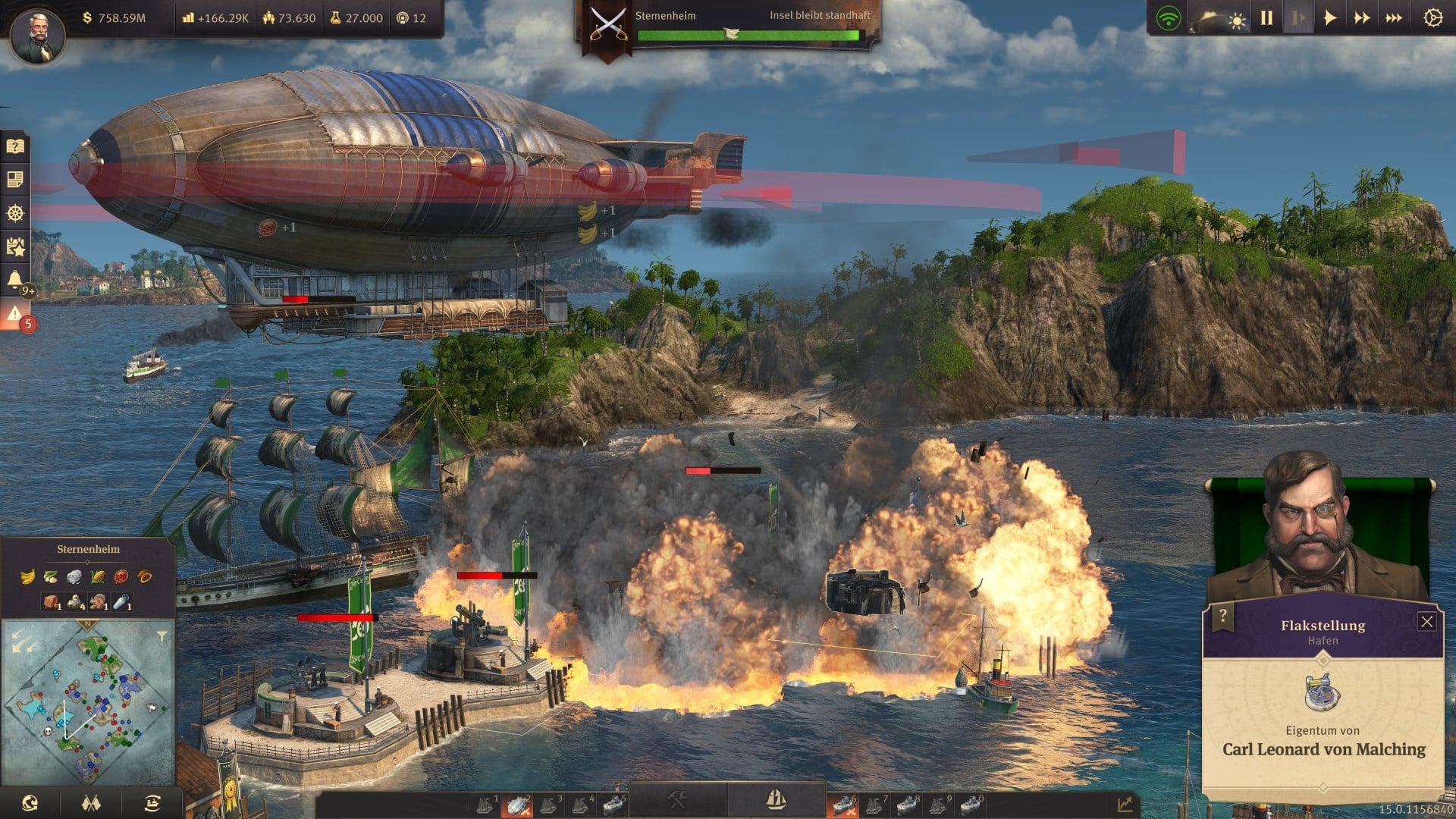
Our assessment is that aerial battles will at most be fought in multiplayer games between players, rather less in pure AI matches. This is also due to the fact that bombing raids are riskier than the classic long-range combat with ships, because the bombers have to get close to the target and cannot withstand much flak.
Air hangar and air port
As in the DLC The Passage, you build a hangar in four stages to build airships. On each island of the Old and New Worlds, you can place an air harbour that functions like a warehouse but has three special module slots.
Super: With an attached commuter station, journaleros and obreros commute between the islands, just like the commuter quay in the Old World. This was high on the wish list of many players because it helps enormously with the labour shortage on individual islands.
Module number two is the item terminal, with which you can “beam” items quickly between airports, i.e. without physical transport. In the third type of module, the airmail warehouse, you collect letters – we”ll get to that now.
Your residents now write and receive letters. To do this, you build post offices or, as a smaller alternative, letterboxes. Letters are produced here – the more residents live in the radius, the faster.
Letters are not normal physical goods, you can only transport them with the new airships on airmail transport routes between islands (similar to crude oil and tankers). If you distribute letters between islands within a region, they become regional mail. And if you fly them around between regions, they turn into supra-regional mail. This brings more quality of life – see next point.
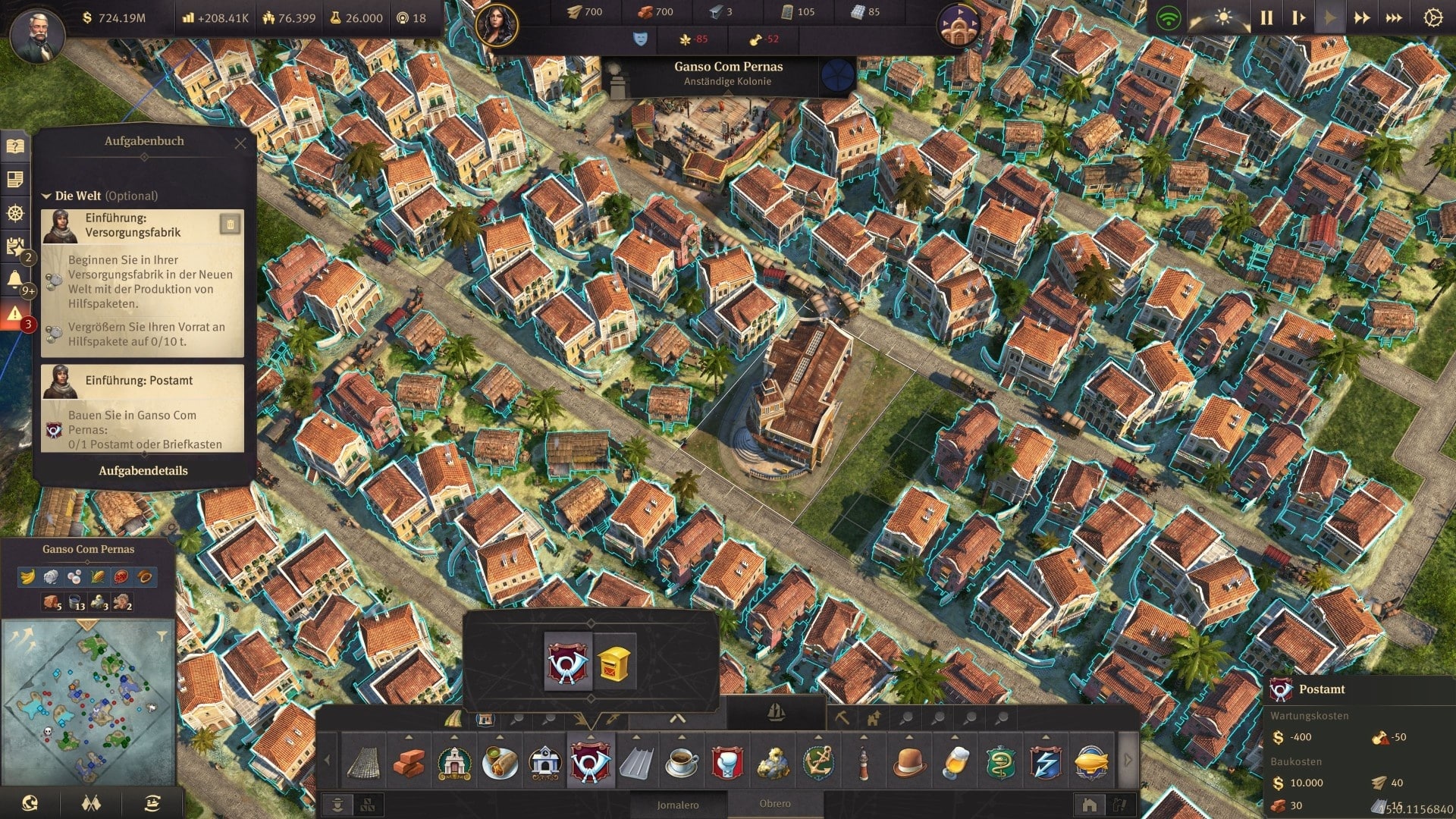
Quality of life
Every population level (so depending on your DLCs also in Enbesa, the Arctic, your scholars and tourists) on every island now has a “Quality of Life” button in their house view. This quality of life complements the previous well-being factors of needs and satisfaction. And it is extreme: the supply of local, regional and supra-regional mail already increases the maximum number of inhabitants of a farmhouse by four farmers, for investors even by 45.
In addition, with Game Update 15 (i.e. also for non-DLC buyers), other goods besides the supply of letters increase the quality of life and thus the maximum number of residents per farmhouse.
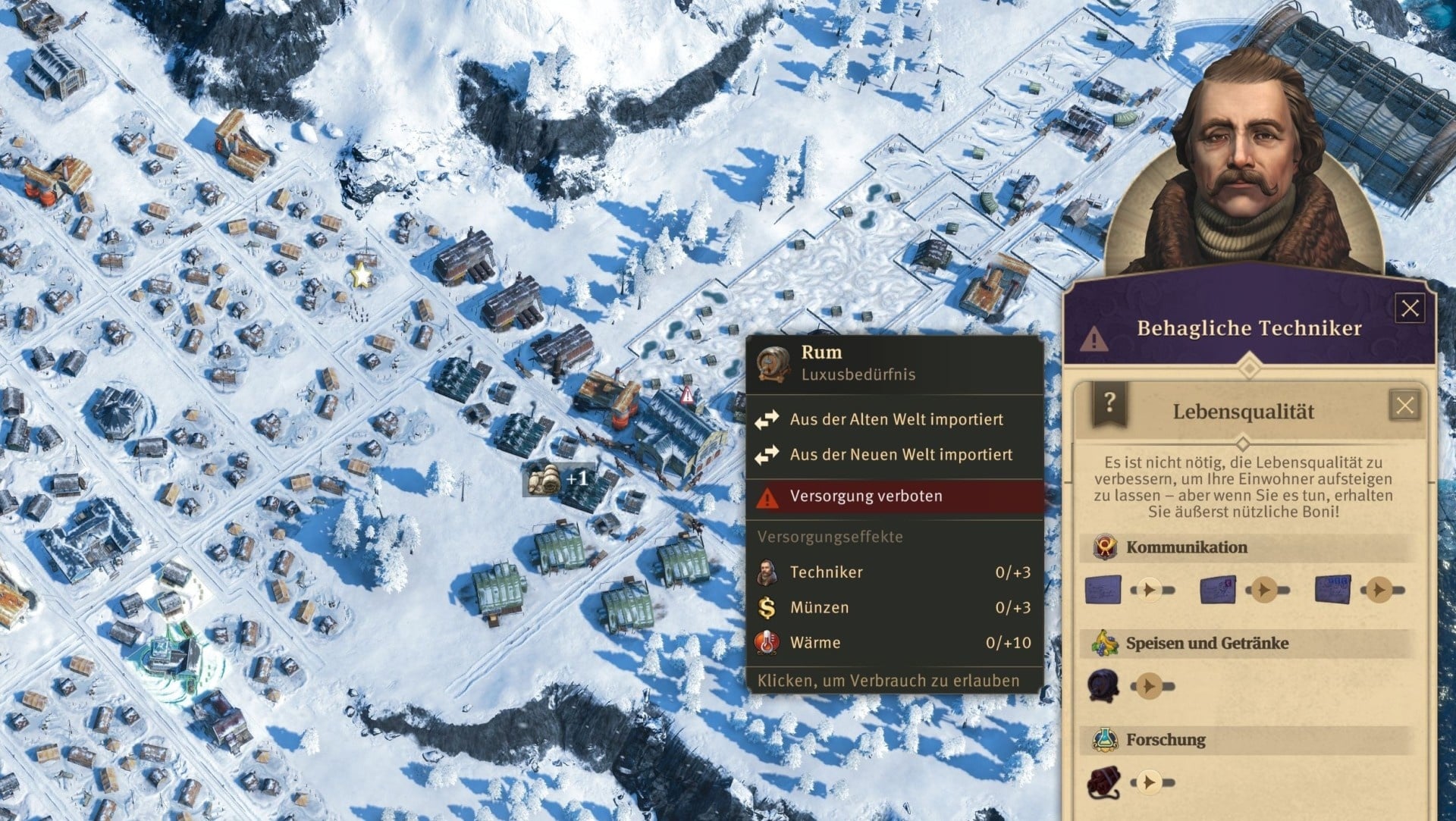
Farmers want flour, sugar and jam, for example, and if you deliver the three goods plus the three types of letter, up to 20 farmers pile into one hut instead of ten before. In the case of investors, you can even get up to 70 additional people per house. Because this applies to all population levels, it has an extreme impact on your population numbers!
Fulfilled quality of life also often increases the income per dwelling house. For some required goods, such as the aforementioned jam or tapestries, you also need previous DLCs.
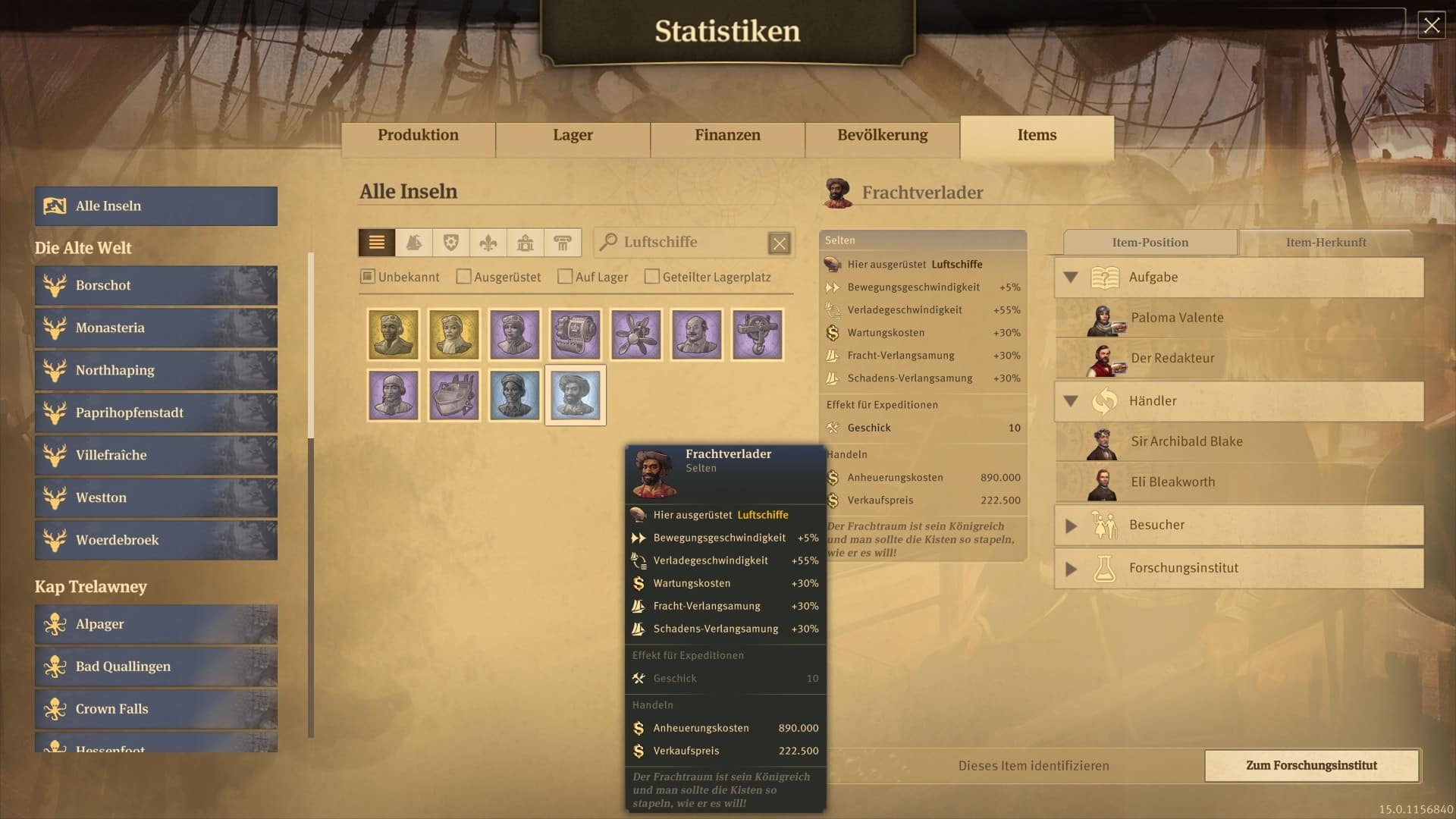
If you do not provide the quality of life goods, this will not affect level upgrades, which will still be possible, i.e. a farmhouse can be upgraded with ten inhabitants. Houses without quality of life do not become ruins.
In addition, you can switch the delivery on and off, for example to use raw materials in factories. Incidentally, the newly acquired residents do not consume any goods from the areas of need and satisfaction – this makes the population explosion incomprehensibly even easier.
And what else?
With the DLC Empire of the Skies, you”ll get fancy ornaments for your airports as well as about ten items, including the Airship Canonier, which increases the range and precision of a battleship.
“Battle of the Couriers” Scenario
As a single scenario, there is a funny competition in which you deliver letters to islands, sometimes under time pressure. As proof, you get the used stamps, which you in turn sell to traders. Parallel to your flights, you expand your starting island and launch more airships.
The other islands in the scenario do not have flat coasts, so you are dependent on airships for settlement and supplies. You choose when you want to take on which competitor, and then you have to deal with the corresponding mali. There is also a curiosity: if you challenge the company “New World Express”, your workers will be swapped – Jornaleros will do Obrero jobs and vice versa.
Along the way, you”ll find lost mail that starts fun side quests. The bottom line is that this is more fun than the scenario from Germ of Hope and is also more generous with the countdowns.
Final game: little conversion needed
Thank God: After having to neatly rebuild our endless game islands in previous DLCs like Journey Time, Realm of the Skies is more merciful here. Especially in the cities: post offices only need six by four spaces and already have a good radius, letterboxes even only take up a single space. Your hangar (one is enough) and your airports need more space, but they don”t have to be centrally located – you can usually find a good free space.
All innovations are introduced to you by the airship pioneer Paloma Valente via voice output and deepened with simple tasks. However, that”s it, there is no larger quest series like in the VIP finale of season 3. But for that you get the single scenario “Battle of the Couriers”.
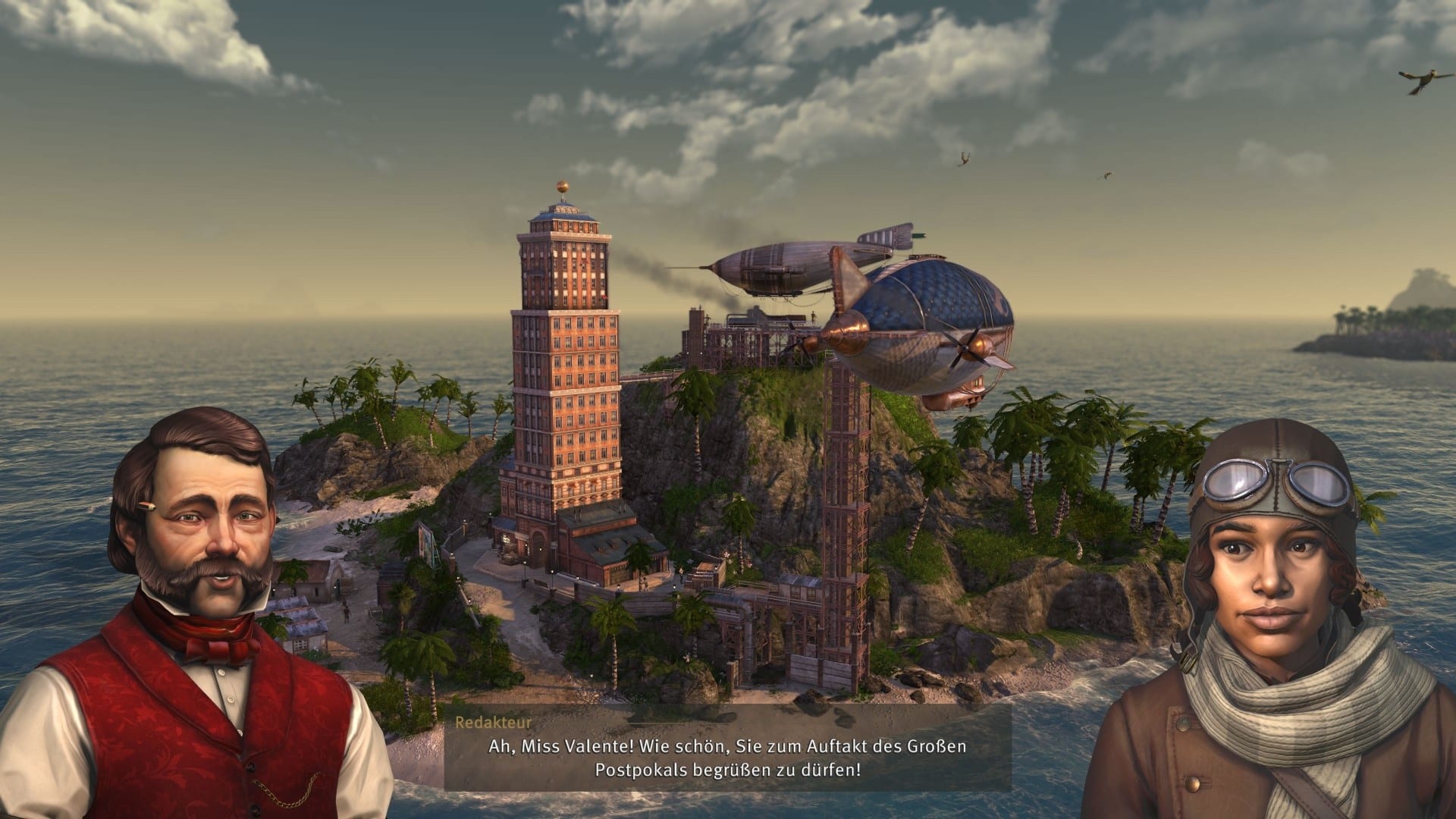
Conclusion: Not suitable for every type of player
Realm of the Skies will not appeal to every type of player. Those who like to optimise, puzzle and want the longest possible production chains will come up short here. For there are hardly any new raw materials and only minimal conversion actions in the cities. And those who only play peacefully do not need bombs, sea mines or flak ships. Not everyone will like the passive postal system either, because a lot happens automatically here – once set up, you don”t have to make many adjustments to the airmail lines.
However, if you like to play in a relaxed way without much restructuring, or if you want to upgrade the New World (finally there”s commuter transport!), Empire of the Skies is a good choice. Especially since you can quickly and easily get more population via the new quality of life factor – for us, this is already too easy, especially in view of the more demanding DLCs such as travel time or rooftops of the city. All in all, we liked Germ of Hope a lot better. But now we”re looking forward to the finale with Rise of the New World.
Editorial conclusion
After the extensive travel time finale of the third season and the tinkering haciendas from the Germ of Hope expansion, the DLC Realm of the Skies is almost a relaxing holiday for me. No big rebuilding measures, no sprawling production chains – but fancy planes and finally labour commuting in the New World. For me as a peace-loving Anno player, however, the new air wars are superfluous, but of course everyone must know that for themselves.
With the new quality of life factor through letters, however, the effects go way too far, the population figures increase very much with little effort – this is too easily earned for me compared to other DLCs. And when I think back to the time-consuming hangar construction in the Arctic, I get the new (and partly better) airships virtually thrown at me!

